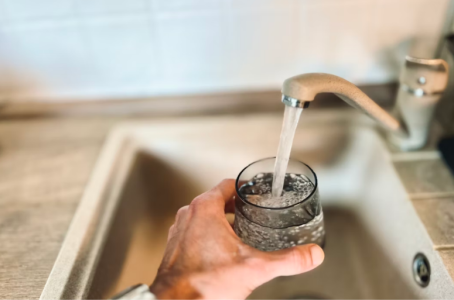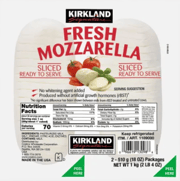Drinking water warning issued for Illinois residents amid safety concerns
- Replies 0
If you live in the Peoria District of Illinois, your drinking water might not be as safe as you think. Illinois American Water has issued an alert after routine sampling revealed lead contamination in household taps across the region.
While the company has contacted certain customers directly, this warning affects everyone drawing from the same aging infrastructure.
With over 120,000 residents potentially impacted, it's time to examine what this means for your daily water use and long-term health.
Recent testing showed that 14 out of 103 samples taken in the Peoria District exceeded the EPA’s lead “action level” of 15 parts per billion.
While that number may sound small, lead is a contaminant with zero safe exposure, according to the Environmental Protection Agency.
Even low levels of lead in blood have been shown to affect IQ, ability to pay attention, and academic achievement, the agency warns.
Illinois American Water said, “We are working with customers whose samples showed elevated levels and have been notified of their specific location results.”

Lead can enter drinking water through old pipes, fixtures, or service lines, especially when water has been sitting unused for hours.
In many older communities, lead plumbing is still in place beneath homes and streets, silently leaching into the water supply.
Illinois American Water explained, “If the water in your faucet has gone unused for more than six hours, flush the tap with cold water for 30 seconds to two minutes before drinking or using it to cook.”
If your line contains lead, a longer flush—three to five minutes—is recommended to reduce risk. Exposure to lead can be especially damaging for children, pregnant women, and those with underlying health conditions.
Also read: Is summer triggering your migraines? Here's what experts say could be to blame
The EPA states, lead can cause serious health problems if too much enters your body from drinking water or other sources.
In children, that includes irreversible learning and behavioral issues; in adults, it may contribute to kidney damage and high blood pressure.
Even if symptoms aren’t immediate, the long-term effects of consistent low-dose exposure are significant.
Illinois American Water has emphasized that boiling water does not remove lead—on the contrary, it can make the contamination worse.
As the company warns, “Boiling water will not remove or reduce lead.” For vulnerable individuals, such as pregnant women and young children, bottled water should be used for drinking and cooking until the issue is resolved.
Residents are also advised to contact the company to request a free lead sampling kit for their home.
To reduce your risk immediately, the company recommends flushing your pipes regularly, using only cold water for consumption, and installing NSF/ANSI Standard 53 certified filters if lead is suspected.
“Use cold water for drinking, cooking and making baby formula,” Illinois American Water advises, noting that hot water is more likely to absorb lead from plumbing.
Also read: Something alarming is moving state to state that is prompting nationwide health alerts
The water you flush can be reused for non-consumption purposes like watering plants to avoid waste.
These steps may not be perfect, but they are meaningful safeguards while officials continue long-term mitigation efforts.
While the utility is conducting additional testing and infrastructure evaluations, a full solution will take time.
Illinois American Water Company said it would be conducting additional lead and other water quality monitoring to “determine the extent of the situation as well as any site-specific concerns,” the company said.
Replacing lead service lines is a lengthy and expensive process that could take years to complete. In the meantime, public vigilance remains the first line of defense against a largely invisible threat.
This crisis is part of a larger national trend tied to America’s aging water infrastructure. According to the Environmental Working Group, more than 50,000 lifetime cancer cases could be prevented in the US if utilities adopted a multi-contaminant approach.
While lead isn’t the only contaminant of concern, it is one of the most studied and dangerous. What’s happening in Peoria could be a preview of what’s to come elsewhere if broader investments in public water systems aren’t made.
Read next: Experts urge caution as tick-borne diseases reach alarming levels

Have you tested your water recently or dealt with unsafe tap water in your area? What precautions are you taking to keep your household protected? Share your thoughts and advice in the comments below—and help others stay alert by passing this along to friends and neighbors. Clean water is a right, not a privilege—let’s work together to make sure it stays that way.
While the company has contacted certain customers directly, this warning affects everyone drawing from the same aging infrastructure.
With over 120,000 residents potentially impacted, it's time to examine what this means for your daily water use and long-term health.
Recent testing showed that 14 out of 103 samples taken in the Peoria District exceeded the EPA’s lead “action level” of 15 parts per billion.
While that number may sound small, lead is a contaminant with zero safe exposure, according to the Environmental Protection Agency.
Even low levels of lead in blood have been shown to affect IQ, ability to pay attention, and academic achievement, the agency warns.
Illinois American Water said, “We are working with customers whose samples showed elevated levels and have been notified of their specific location results.”

Drinking water warning issued for Illinois residents amid safety concerns. Image source: Swanky Fella / Unsplash
Lead can enter drinking water through old pipes, fixtures, or service lines, especially when water has been sitting unused for hours.
In many older communities, lead plumbing is still in place beneath homes and streets, silently leaching into the water supply.
Illinois American Water explained, “If the water in your faucet has gone unused for more than six hours, flush the tap with cold water for 30 seconds to two minutes before drinking or using it to cook.”
If your line contains lead, a longer flush—three to five minutes—is recommended to reduce risk. Exposure to lead can be especially damaging for children, pregnant women, and those with underlying health conditions.
Also read: Is summer triggering your migraines? Here's what experts say could be to blame
The EPA states, lead can cause serious health problems if too much enters your body from drinking water or other sources.
In children, that includes irreversible learning and behavioral issues; in adults, it may contribute to kidney damage and high blood pressure.
Even if symptoms aren’t immediate, the long-term effects of consistent low-dose exposure are significant.
Illinois American Water has emphasized that boiling water does not remove lead—on the contrary, it can make the contamination worse.
As the company warns, “Boiling water will not remove or reduce lead.” For vulnerable individuals, such as pregnant women and young children, bottled water should be used for drinking and cooking until the issue is resolved.
Residents are also advised to contact the company to request a free lead sampling kit for their home.
To reduce your risk immediately, the company recommends flushing your pipes regularly, using only cold water for consumption, and installing NSF/ANSI Standard 53 certified filters if lead is suspected.
“Use cold water for drinking, cooking and making baby formula,” Illinois American Water advises, noting that hot water is more likely to absorb lead from plumbing.
Also read: Something alarming is moving state to state that is prompting nationwide health alerts
The water you flush can be reused for non-consumption purposes like watering plants to avoid waste.
These steps may not be perfect, but they are meaningful safeguards while officials continue long-term mitigation efforts.
While the utility is conducting additional testing and infrastructure evaluations, a full solution will take time.
Illinois American Water Company said it would be conducting additional lead and other water quality monitoring to “determine the extent of the situation as well as any site-specific concerns,” the company said.
Replacing lead service lines is a lengthy and expensive process that could take years to complete. In the meantime, public vigilance remains the first line of defense against a largely invisible threat.
This crisis is part of a larger national trend tied to America’s aging water infrastructure. According to the Environmental Working Group, more than 50,000 lifetime cancer cases could be prevented in the US if utilities adopted a multi-contaminant approach.
While lead isn’t the only contaminant of concern, it is one of the most studied and dangerous. What’s happening in Peoria could be a preview of what’s to come elsewhere if broader investments in public water systems aren’t made.
Read next: Experts urge caution as tick-borne diseases reach alarming levels
Key Takeaways
- Over 120,000 residents in Illinois’ Peoria District were notified of elevated lead levels in their water supply following routine testing.
- Lead is a toxic contaminant with no safe exposure level, particularly harmful to children, pregnant women, and people with health conditions.
- The EPA’s action level for lead is 15 parts per billion, but the agency's official goal is zero.
- Illinois American Water advises residents to flush taps, avoid using hot water for consumption, and consider filters or bottled water where appropriate.






